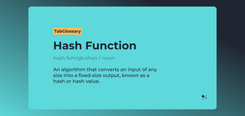Order Types Introduction
Intro
Trading on exchanges is generally based on a bid/ ask setup.
In order to sell, there must be a buyer willing to pay the sell price. To buy, there must be a seller willing to sell at the price demanded by the buyer.
No transaction occurs until a buyer and seller agree on the same price.
The bid is the highest posted price someone will pay for an asset, and the ask is the lowest price at which someone is ready to sell an asset. The bid and ask are continuously changing, as each bid and offer represents an order. The bids and asks are recorded on the order book.
As orders are filled, these levels will change.
For example, if there is a bid at 10.15 and another at 10.16, when all the orders at 10.16 have been filled, the next highest bid is 10.15.
Standard order types
Market Order – an instruction to buy or sell an asset at the best available price. Execution of this order results in opening a trade. Securities are bought at the ask price and sold at bid price. How the order ends up executing depends on the liquidity of the order book; on popular cryptocurrency exchanges, your market order should be filled almost instantaneously.

Market order form
Limit Order – a type of order to buy or sell an asset at a specified price or better. For buy limit orders, the order will be executed only at the limit price or lower, and for sell limit orders, the order will be executed only at the limit price or higher. These conditions give traders more control over the prices at which they trade.
When a limit order is placed, it appears on the order book at the set price level.

Limit order form
Conditional order types
Stop Market Order – an instruction to place a market buy or market sell order for an asset when its price reaches a predefined level. When stop orders are triggered, they get converted to market orders that are executed at the best available price.

Stop-Market order form
Stop Limit Order – an instruction to place a limit buy or a limit sell order for an asset when its price reaches a predefined level. Once triggered at the stop price a limit order is placed at the set price.
Stop-limit orders help traders exercise precise control over their trading goals — when the order should be executed. However, the execution itself strictly depends on market conditions.

Stop-Limit order form
Stop Loss
This order type is used for minimizing losses if the asset price is going in an unprofitable direction. If the price reaches the set level, the position will be closed automatically. This order type comes in combination with a market or a limit order.

Stop-Loss order form
Take Profit
A take-profit order is designed for capturing gains when the asset price has reached a certain level. Execution of this order results in closing of the position. The order can be requested only together with a market or a limit order.

Take-Profit order form
Use of orders
When buying an asset a trader should consider how to get in and out of the position aiming to lock in profits and avoid losses. This means there are potentially three order types to consider before trading: one for entry, a second to control risk if the price goes in an unexpected direction (by means of a stop-loss), and another to capture gains if the price does move in the direction desired (profit target).
You can also select different order execution conditions.


